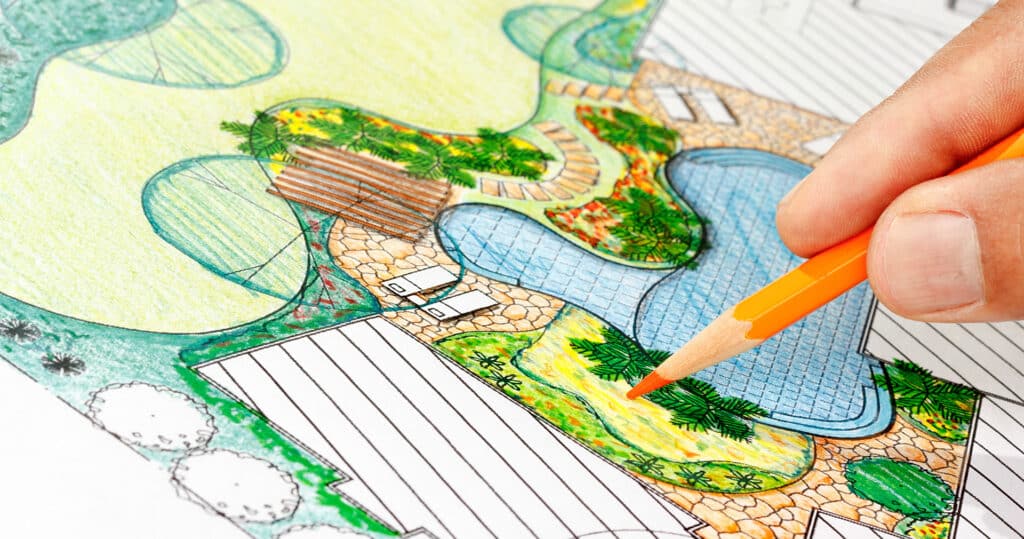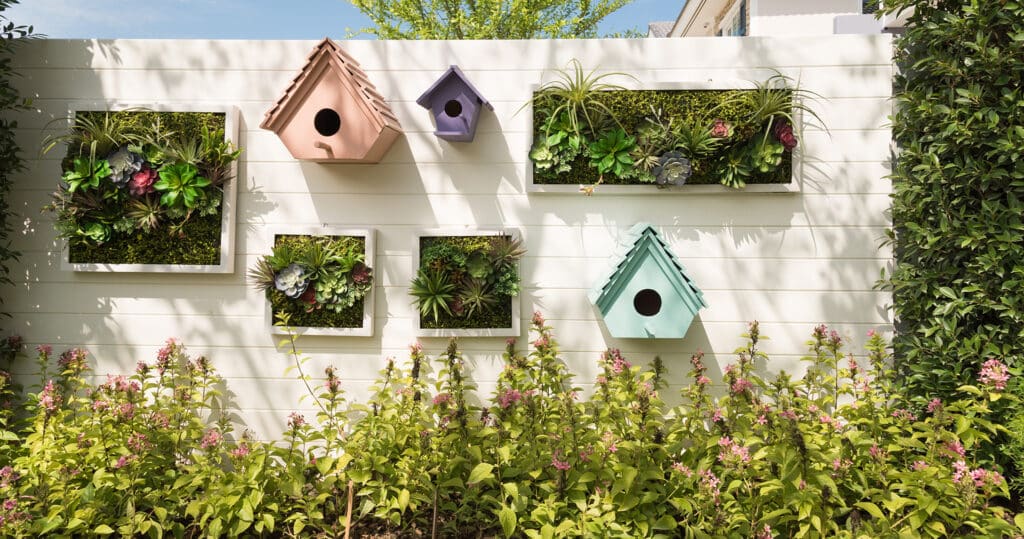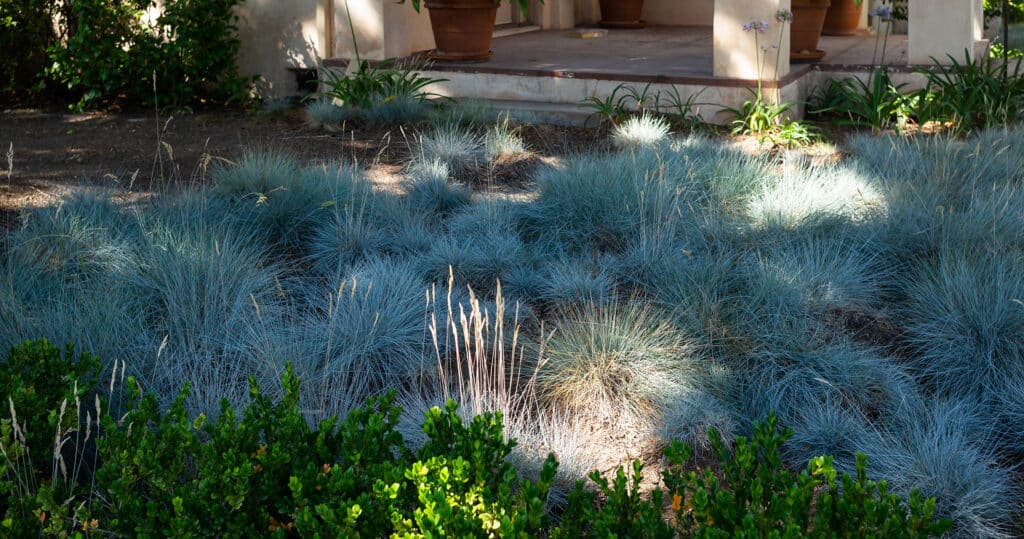Landscape design can transform the look and feel of any outdoor space. Whatever the property owner’s goals, there are likely design techniques that can help. But you can’t make relevant recommendations if you’re not up to date on the latest trends yourself.
That’s why we’ve created this overview of the best landscape design trends for 2023. We did all the legwork, so you don’t have to.
Whether you’re focused on creating a more beautiful space or enhancing functionality, there are emerging trends that can help. And homeowners are looking for the kind of guidance only a seasoned, up-to-date professional can provide.
What Is Landscape Design?

Landscape design is the process of planning and creating outdoor areas with a focus on:
- Enhancing aesthetics
- Improving functionality
- Provide additional privacy
- Generally revamp the space.
Landscape design can be applied to residential yards, gardens, and courtyards. It’s also used in larger spaces, like public parks and other recreational areas.
Design elements like plants, trees, lawns, fencing, hardscaping (stone & tile), irrigation systems, and lighting are all incorporated in creative ways. The end goal is to enhance the beauty of a space and improve usability.
FROM ONE OF OUR PARTNERS:
How to Do Email Marketing for Landscaping Companies
Why It’s Important to Know Current Design Trends
Landscape trends change over time, just like any other designed element of a home. (Remember shag carpets? Gah.) Landscaping designs that were popular just a few years ago will be hit-and-miss today.
Some are still trending. Others have been replaced by newer techniques.
In order to be competitive, you need to know what your potential customers are looking for—even if they don’t know. After all, few things will land a solid online review like exceeding a homeowner’s expectations.
What better way than with an option they didn’t know was available?
FROM ONE OF OUR PARTNERS:
5 Ways To Quickly Boost Your Customer Feedback Strategy
The Latest, Greatest Landscaping Design Trends
Here’s a glimpse of some of the 2023 landscape design trends we are keeping an eye on for this season.
1. Adding Textures and Foliage Plants
Adding texture and foliage plants to a landscape can enhance the area’s visual appeal.
Textured plants can include grasses and succulents. These add depth and movement to a landscape. Foliage plants provide a lush green backdrop that can complement other floral elements.
Ferns, hostas, and heucheras are often selected for foliage plants because they come in various shapes, sizes, and colors. They can add more depth to a landscape. When selecting these plants, light, and soil conditions are essential. Some prefer shade over direct sunlight, and others prefer well-drained soil.
Once you’ve selected your textured and foliage plants, consider how you’ll arrange them in the landscape. Creating layers and grouping plants with similar light and soil requirements will help create a cohesive and visually exciting design.
These plants can also provide natural borders for a landscape. This is an effective way to define different areas, create privacy, and even reduce noise.
RELATED ARTICLE:
How to Market and Grow Your Landscape Business
2. Continue to Recommend Vertical Gardens

Also known as green walls or living walls, vertical gardens involve growing plants on vertical surfaces, such as walls, fences, or even entire buildings.
The concept of vertical gardening has been around for centuries. However, it has recently gained popularity as a way to incorporate greenery into urban spaces. It’s a great option where traditional gardening is limited due to space.
This allows even homeowners and renters with small spaces to have a significant amount of greenery. Apartment renters and condo owners often don’t have access to enough land for a traditional garden.
It’s also a sustainable way for these folks to have a garden, including a vegetable garden, without using a community plot.
There are pre-planted panels that can be hung on a wall. Or you might recommend a living wall that’s built using a variety of materials, such as wire mesh, plastic pockets, or even repurposed shipping pallets.
These can help create privacy in the condo or apartment or be used as a wall between homes.
3. Taking a High-Tech Approach to Greenery
Landscaping isn’t just for social media pics. As technology plays an increasingly significant role all of life, it’s no surprise to see it popping up in landscape design, as well.
For example, audio and visual elements can be used to add music and sound to a landscape. Speakers and lighting fixtures can be hidden in plain sight. As a landscaping designer, you need to know how to add these elements while hiding cords and boxes.
Garden design planning is also going high-tech. Landscaphttps://www.dynascape.com/solutions/design/ing design software is used to create layouts. With the right app, you can plan a full design before you even step in the yard.
Designers can also add smart systems, like lighting and irrigation, that automatically start at specific times. This kind of automation adds real value, reducing costs for water and electricity and making maintenance extremely easy.
4. Fake It
Homeowners generally prefer low-maintenance yards. As a result, there are some options you might not immediately consider that could be best for some clients.
Fake flowers, plants, and even grass can create a surprisingly realistic look. Artificial grass is an increasingly common preference. Some are even using artificial turf in large areas, like whole yards, to reduce maintenance dramatically.
This is also a great approach for areas where natural grass can’t grow. Rocky areas, spots with too much shade, for example. Or parts of the country often affected by drought.
Be aware, though, there’s a hefty upfront cost for some of these artificial options. But the long-term savings on everything from maintenance to equipment to water can allow a homeowner to recoup those costs over time.
RELATED ARTICLE:
5 Spring Season Landscape Maintenance Services To Offer
5. Keeping Landscaping Sustainable

As the world moves towards more green solutions, sustainability is on everyone’s mind. Solar lights, for example, are more than a great way to reduce wires and cords. They also rely on natural energy from the sun and reduce your carbon footprint.
The move toward native plants represents another sustainable trend. Native plants are typically less susceptible to disease and more likely to thrive simply because they’re naturally occurring in the area. They also tend to be more low-maintenance.
Rainwater collection is another way homeowners are adjusting to keep things sustainable. Rain barrels are finding their way into more landscape designs. These are especially useful in places with heavy periods of drought or for homeowners with large landscapes.
Rainwater can be collected and used to water the lawn and garden (AKA a rain garden), fill swimming pools and ponds, or even wash the car. There are many ways to incorporate even small rainwater collection devices.
Plus, they can easily be an aesthetically pleasing addition to any landscape design.
Keeping Current With Evolving Trends
Landscape design is an ever-evolving field. New trends emerge with each season. Keeping up can be a real challenge. But it’s a challenge well worth the effort.
When you know the latest trends, you’re in a prime position to win new clients and dazzle long-time customers.
And if you’re looking for a little digital help with your design efforts, we’d be remiss if we didn’t mention DynaScape’s landscape design software. Our software helps designers create landscapes and present them in a professional, sales-oriented way.
If you’d like to learn more, book a demo with us today. We’d love to show you how DynaScape can help you produce landscape designs faster.